Slips, Trips and Falls

Slips, Trips and Falls are among the most common accidents in the workplace. They can lead to injuries, absenteeism and even fatalities. However, with the proper training, awareness and preventive measures, slips, trips, and falls can mostly be avoided. Below are common causes of slips, trips and falls and ways to prevent them in the workplace.
Understanding The Cause:
1. Wet or Slippery Surfaces
Spills, leaks, and wet weather conditions can create slippery surfaces which increase the risks of slips and falls. Areas like bathrooms, entrances and kitchens are prone to these hazards, and should be properly maintained to avoid injury.
2. Poor Lighting and Clutter
Poor lighting can ‘highlight’ hazards such as uneven surfaces, obstacles, and changes in elevation. Examples of these hazards may include stairs, loose floorboards, damaged walkways, loose materials, and loose tools. Poor lighting makes it difficult for employees to see where they’re walking and increases the chances of trips and falls. Cluttered workspaces and obstacles left in workspaces create hazards and may lead to trips and falls.
3. Improper Footwear
Wearing inappropriate footwear for the workplace environment such as high heels, shoes with worn out treads, or shoes that don’t necessarily fit, can increase the risk of slips trips and falls.
Preventive measures:
1. Maintain Cleanliness
Implement regular cleaning schedules to promptly address any spills or leaks in your workplace. Signage may warn employees of wet floors or any other hazards that may jeopardize their safety. It is necessary that employers encourage their employees to keep their workspaces tidy and free or clutter. For example, employees may use cable management systems to secure any loose cords or wires and designate storage areas for equipment and supplies.
2. Ensure Adequate Lighting
Properly illuminate all spaces of your workplace such as hallways, stairwells, outdoor pathways, and any changes in elevation. For example, installing motion sensor lights can improve visibility, safety and are energy efficient.
3. Regular Hazard Assessments
Conduct frequent inspections of the workplace to identify potential slips, trips, and falls.
4. Implement Proper Footwear
Ensure employees wear proper footwear for their job duties and the environment they work in. Providing proper footwear such as boots with proper tread or non-slip shoes can greatly prevent slips and falls in the workplace.
5. Slip-Resistant Flooring
Install slip resistant flooring in areas that are prone to spills and moisture such as kitchens, entrances, and bathrooms. This may include rubber mats and carpets which helps to better provide traction and reduce the possibility of slips and falls.
Employee Training:
1. Training Programs
Implement training programs to educate employees on recognizing and avoiding slips, trips and fall hazards.
2. Safety Signage and Encourage Reporting
Make sure to use clear and visible signage to alert employees of potential hazards like slippery floors, stairs, open flooring, and uneven surfaces. Supervisors must also ensure that the signage is regularly updated and placed in prominent locations. It is important to create a culture of safety where employees feel comfortable reporting hazards and near misses.
Establishing clear reporting procedures and encouraging open communication between management and staff can help identify hazards so that the correct signage or prevention measures are put in place.
3. Regular Safety Meetings
It is necessary to hold regular safety meetings to discuss slips, trips, and fall prevention strategies, reinforce safety protocols, and review past incidents. Employee feedback shall be encouraged to improve safety measures.
Slips trips and falls pose significant risks in the workplace, but with proper awareness, training and preventive measures, these accidents can be greatly reduced. By addressing common causes such as wet floors, improper lighting, obstacles, clutter, improper footwear, uneven surfaces and many more, employers can create safer environments for everyone in the workplace.
Additionally, implementing training programs, maintaining housekeeping, and promoting a culture of safety can further enhance the prevention of slips, trips, and falls. Remember, preventing slips trips and falls isn’t just about compliance, it’s about the well being of everyone in the workplace and fostering a productive, thriving, and safe workplace environment.
Learn More
To learn more about how you can ensure due diligence and protect your workers, contact us at 905-669-5444 or info@safetyfirstconsulting.ca for more information on our health and safety consulting. Safety First will provide your company with the assistance required to achieve compliance with government health and safety regulations.

